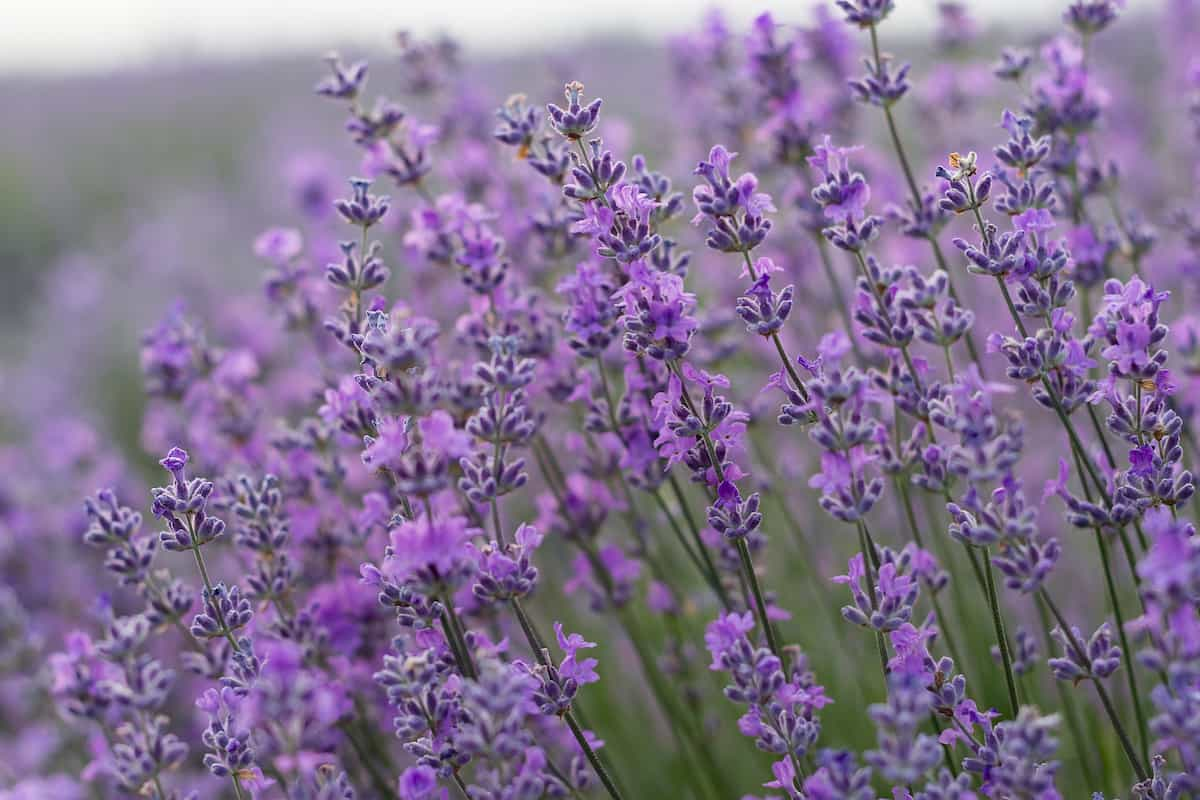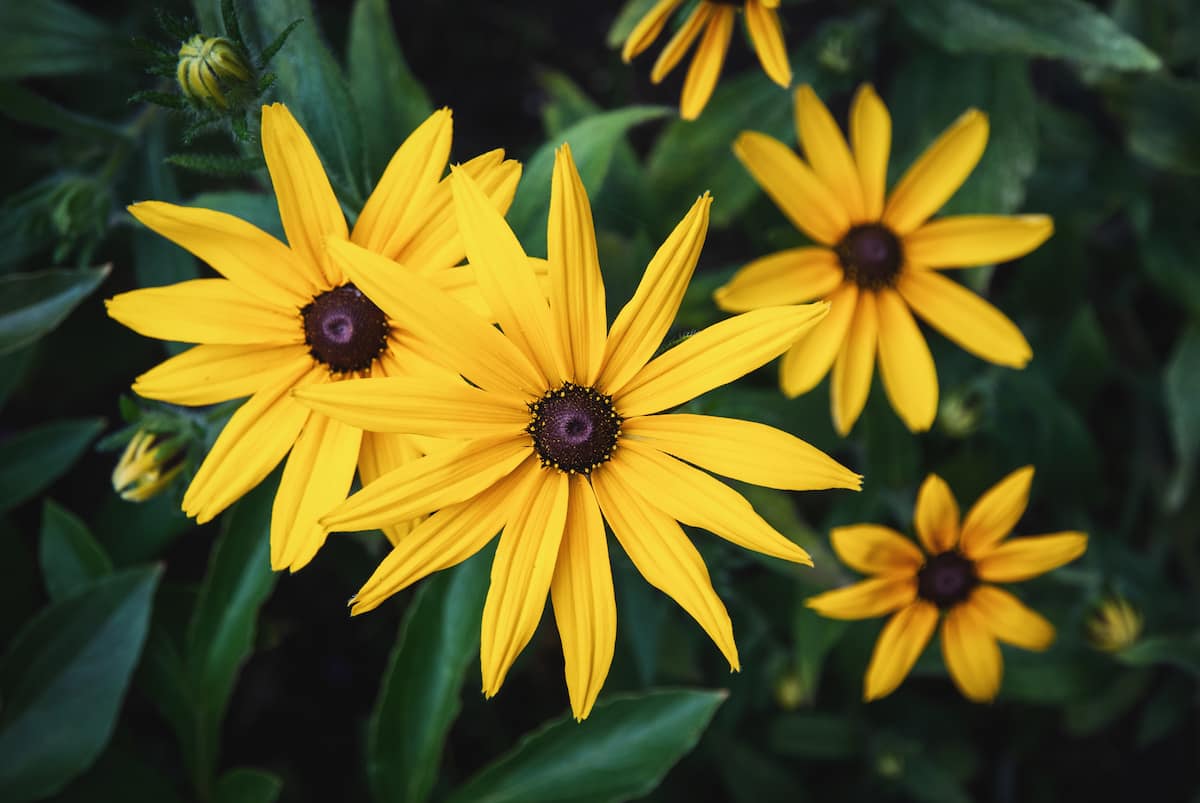You know the frustration of having a lovely yard you worked so hard on ruined by hungry deer if you reside in a deer-populated region. However, plenty of plants are resistant to deer and can help you maintain a beautiful garden. Here’s a step-by-step guide on the best deer-resistant plants to grow.
14 Best Deer Resistant Plants
Lavender
This fragrant perennial has a strong scent that deer find unappealing. It produces beautiful purple flowers that are great for attracting pollinators.

Rosemary
This popular herb has a strong scent that makes it unappetizing to deer. It’s also an excellent plant for culinary use, as well as for attracting bees and other beneficial insects.
Daffodils
These spring-blooming bulbs are toxic to deer, making them an excellent choice for a deer-resistant garden. They come in various colors and can be planted in large groups for a stunning display.
Salvia
This easy-to-grow perennial has a strong scent that deer find unappealing. It produces spikes of flowers in various colors, including blue, purple, and pink.
Catmint
Like catnip, catmint has a strong scent that deer find unpleasant. It’s a low-growing perennial that produces clusters of lavender-blue flowers in the summer.
Peonies
These beautiful, showy flowers are toxic to deer, making them an excellent choice for a deer-resistant garden. They come in various colors, including pink, red, and white.
Russian Sage
This drought-tolerant perennial has a strong scent that deer don’t like. It produces spikes of lavender-blue flowers that are great for attracting pollinators.
Coneflower
This tough, drought-tolerant perennial produces showy pink or purple flowers that are also toxic to deer. It’s a great choice for a low-maintenance garden.
In case you missed it: How to Propagate Plants Using Stem Cuttings: DYI Step-by-Step Guide

Yarrow
This hardy perennial has a bitter taste that deer don’t like, making it an excellent choice for a deer-resistant garden. It produces clusters of small, flat-topped flowers in various colors, including pink, white, and yellow.
Butterfly Weed
This native perennial produces bright orange flowers that are great for attracting butterflies. It’s also toxic to deer, making it a great choice for a deer-resistant garden.
Globe Thistle
This unique and attractive perennial produces spiky blue flowers that are great for cutting. Its prickly leaves and stems make it uIt’sealing to deer, making it a great choice for a border or mass planting.
Japanese Pieris
This evergreen shrub produces clusters of fragrant flowers in shades of pink, white, or red. Its leathery leaves are toxic to deer, making it a great choice for a formal garden or foundation plIt’sng.
Black-Eyed Susan
This bright and cheerful native perennial produces yellow and brown daisy-like flowers that bloom from midsummer to early fall. It’s drought-tolerant and deer-resistant, making it a great choice for a low-maintenance garden.
In case you missed it: How to Grow Plants From Cuttings: DYI Step-By-Step Guide

Bleeding Heart
This shade-loving perennial produces delicate heart-shaped flowers in shades of pink or white. It’s toxic to deer, making it a great choice for a woodland garden where deer are common.
Things to Remember
Determine Your Hardiness Zone
Before you start choosing plants, knowing your hardiness zone is important. The USDA’s system categorizes climate zones based on the average annual minimum temperature. Knowing your hardiness zone will help you choose plants suitable for your climate.
Choose a Variety of Plants
It’s important to choose a variety of plants for your deer-resistant garden. This will not only add visual interest but will also help to prevent deer from becoming accustomed to the same plants over time. Choose a mix of shrubs, perennials, and annuals to keep your garden looking great all year.
Plant Strategically
When planting your deer-resistant garden, it’s important to think strategically. Plant the most deer-resistant plants where deer are most likely to graze. For example, if a vegetable garden is constantly raided by deer, plant deer-resistant plants around the perimeter to create a natural barrier.
Protect Young Plants
Young plants are especially vulnerable to deer, so protecting them is important until they’re established. Use deer netting or chicken wire to create a physical barrier around young plants. You can also spray plants with deer repellent to deter deer from grazing.
Maintain Your Garden
Maintaining your deer-resistant garden is key to its success. Keep the garden free of weeds, which can attract deer. Remove fallen fruit from trees or bushes, which can also attract deer. Prune shrubs and trees regularly to keep them healthy and looking their best.
Consider Other Ways Too
In addition to planting deer-resistant plants, there are other things you can do to deter deer from your garden. Some options include:
- Motion-activated sprinklers: These are triggered by motion and will spray water to scare deer away.
- Homemade deer repellent: Using ingredients like garlic, eggs, and hot peppers, you can make your own repellent.
- Fencing: A tall fence can be an effective deterrent, but it can be expensive and unsightly.
Additional Tips
Choose plants with strong fragrances: Deers have a keen sense of smell, and they will avoid many plants with strong fragrances. Add plants like thyme, sage, mint, or other herbs to your garden. Not only will they deter deer, but they can also be used in cooking and other applications.
Add texture to your garden: Deer don’t like plants with prickly or fuzzy leaves, so incorporating texture into your garden can effectively keep them away. Plants like lamb’s ear, holly, or barberry are good options.
Plant in groups: Planting in groups can make it more difficult for deer to get to your plants. This is because they tend to avoid areas they can’t see easily. Grouping plants can create an obstacle that deer are less likely to navigate.
Use repellents: Many commercial and homemade repellents can keep deer away from your garden. Some popular options include coyote urine, blood meal, and soap sprays. Just follow the instructions carefully to avoid harming your plants or the environment.
Choose plants with thorns: Plants with thorns, like roses or hawthorns, can effectively deter deer. These plants are not only unappetizing to deer but can also provide an added layer of protection for your other plants.
Conclusion
In conclusion, creating a deer-resistant garden is possible and relatively easy. By choosing the right plants and planting strategically, you can create a beautiful and healthy garden that is less appealing to deer. The list above includes some low-maintenance deer-resistant plants and deer-resistant flowers for pots.
- Feed Your Flock for Less: Top 10 Tips to Save on Chicken Feed
- Ultimate Guide to Ossabaw Island Hog: Breeding, Raising, Diet, and Care
- Hatching Answers: The Top 10 Reasons Your Chickens Aren’t Laying Eggs
- Eggs and Economics: Breaking Down the Cost of Raising Backyard Chickens
- Defend Your Greens: Proven Methods to Keep Iguanas Out of Your Garden
- Ultimate Guide to Cinnamon Queen Chicken: A Comprehensive Guide for Beginners
- Ultimate Guide to California Tan Chicken: Breeding, Raising, Diet, Egg-Production and Care
- Ultimate Guide to Marsh Daisy Chicken: Breeding, Raising, Diet, and Care
- 10 Types of Chicken Farming Businesses You Can Start for Profits